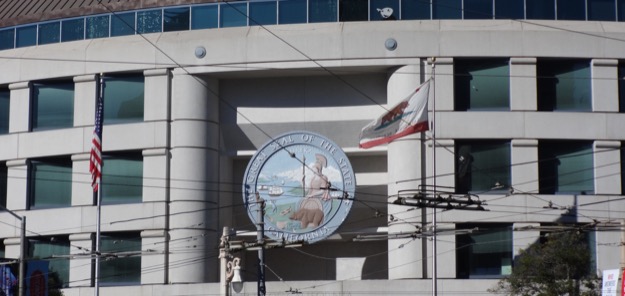
The California Public Utilities Commission plans to take a more active role in deciding where and how broadband infrastructure will be subsidised, and to work more closely with incumbents in the process. Yesterday, commissioners discussed how they will run the California Advanced Services Fund (CASF) program under new rules adopted by the California legislature. Assembly bill 1665 was signed into law by governor Jerry Brown last month. It requires the commission to periodically designate which communities in California can receive CASF money, based on a slower minimum broadband speed standard – 6 Mbps download and 1 Mbps upload – that will slash the number of eligible households from 300,000 to just 20,000, according to one CPUC estimate.
Commissioner Martha Guzman Aceves, who is taking the lead on redesigning the CASF program, said she wants to set specific goals for broadband deployment and work with incumbent providers to achieve them…
The key one I really want to focus on is…the overarching program goals. It can really help us work on how we have this regional focus that is goal driven and certainly one of the things I’ll be mentioning that I want us to consider as one of those goals is to be driven in the areas of highest economic need…
With the federal CAF program and other dynamics there is going to be provider engagement. Again, as I mentioned, the example of Oroville, where you could actually work with Comcast and AT&T to expand to the unserved areas. So this is a new area, it’s one where I think we have a responsibility to really be engaged to ensure that that engagement is balanced.
Up until now, infrastructure projects were created at the local level, usually by independent broadband providers, and then proposed to the CPUC for CASF funding. Incumbents are equally eligible, but a couple of small Frontier Communications grants aside, preferred to either ignore the program, or complain bitterly with varying degrees of truth whenever an independent project was proposed.
AB 1665 flipped that process completely around, giving the CPUC responsibility for making the first-cut decisions on where projects should be built and putting incumbents at the head of the line for getting the money to do it.
That’s really not a reversal for the CPUC itself, though. As president Michael Picker noted, commissioners have wanted, to varying degrees, to proactively manage the CASF program rather than simply responding to proposals as they came in.
Guzman Aceves and communications division director Cynthia Walker outlined a timetable for completing the overhaul by next September. Until then, the plan is to continue funding projects from the $30 million that’s leftover from the old program. No details were given about that process would work though. In the past, the CPUC has tended to take the position that grant proposals are assessed on the basis of the rules in effect as of the application date, but there’s been no indication whether that’s the case now.
CPUC presentation, California Advanced Services Fund, 8 November 2017
